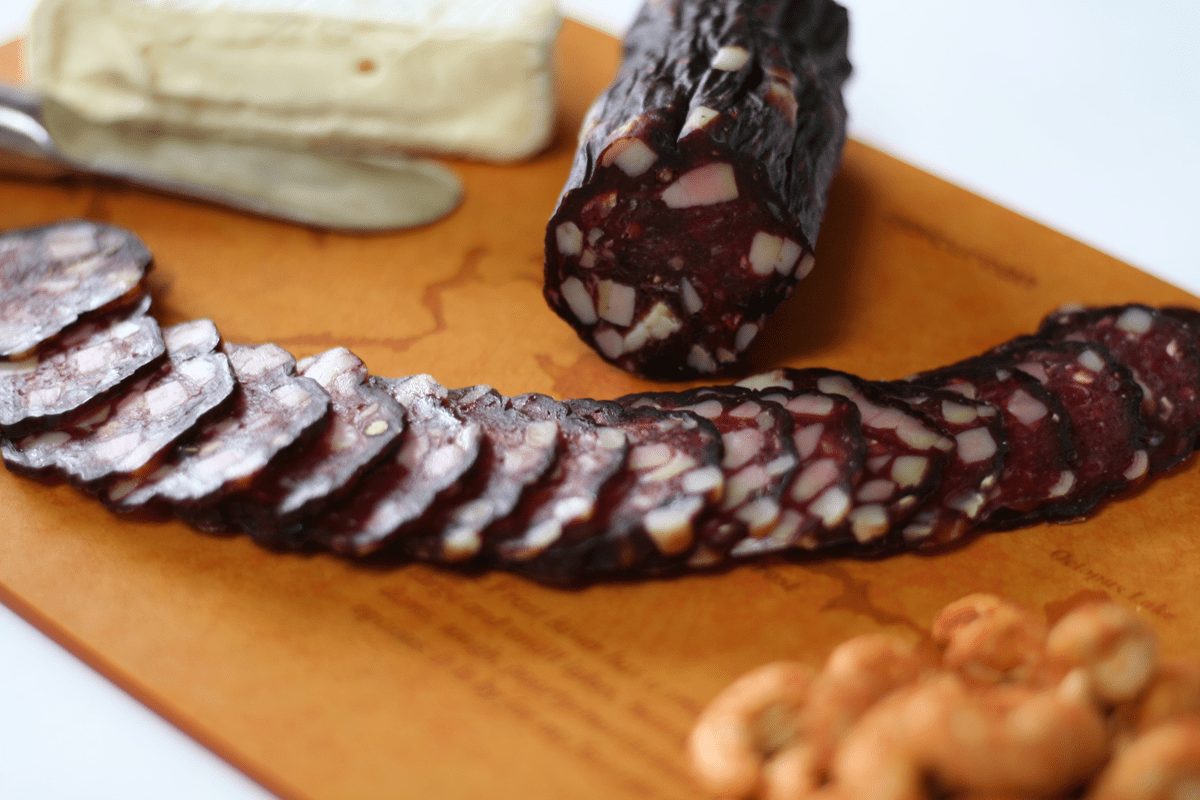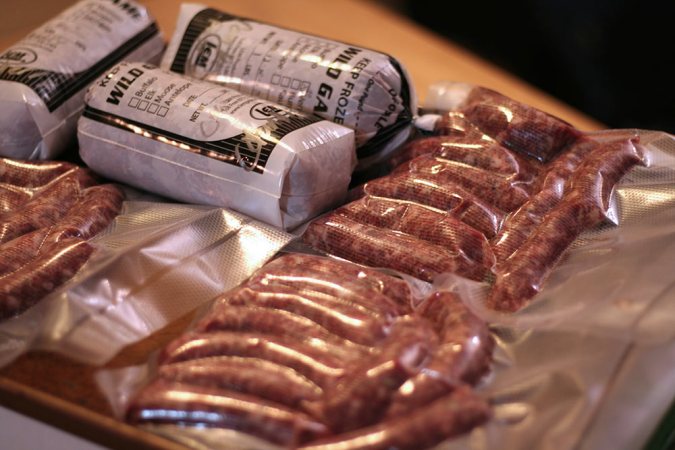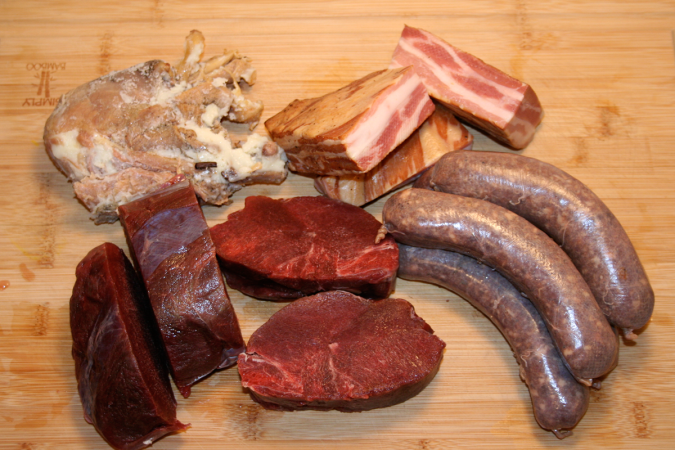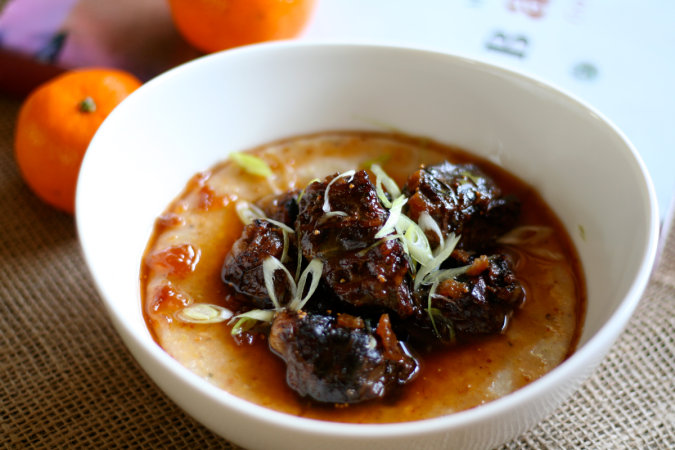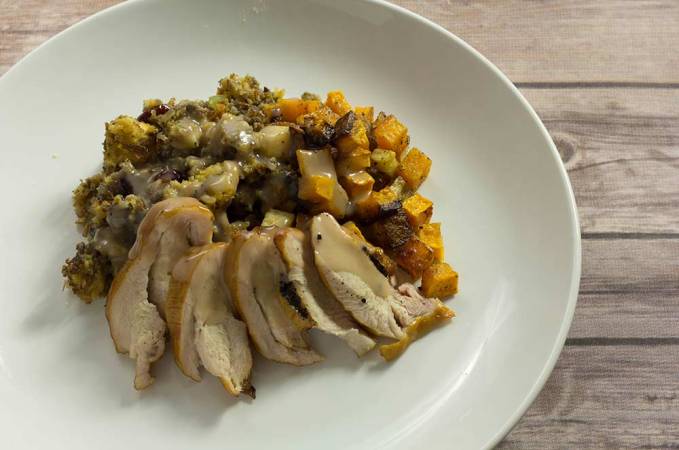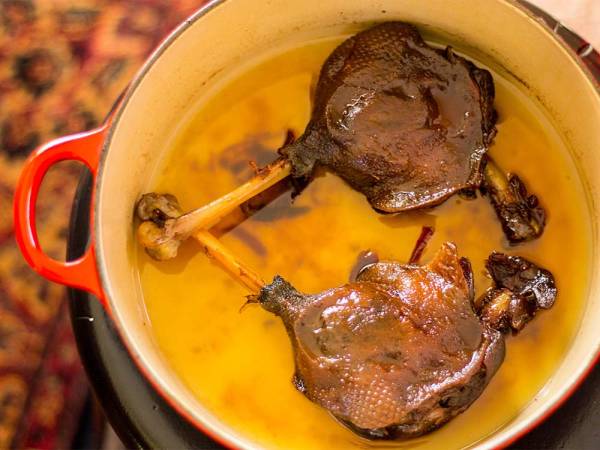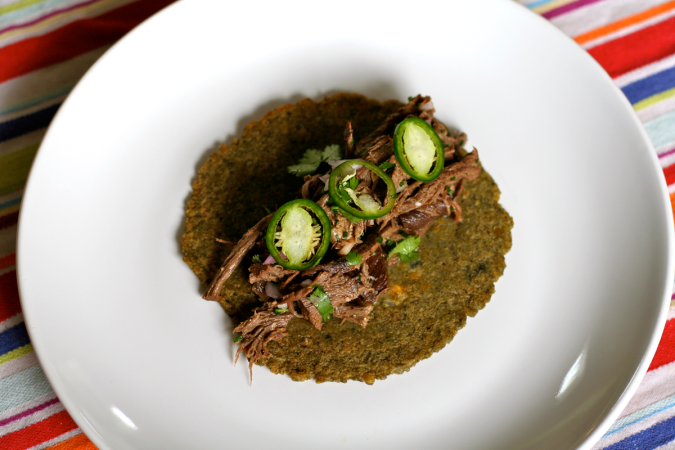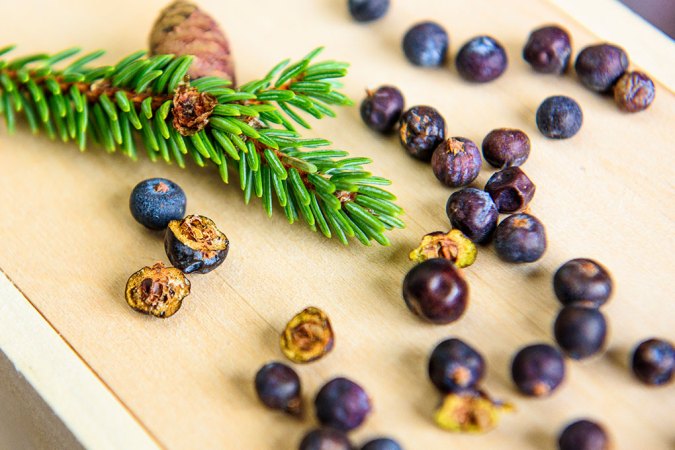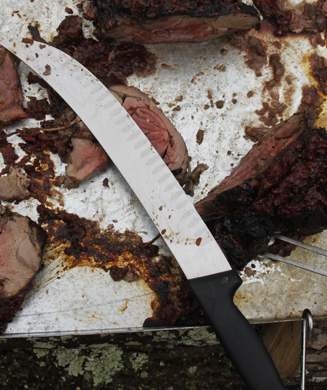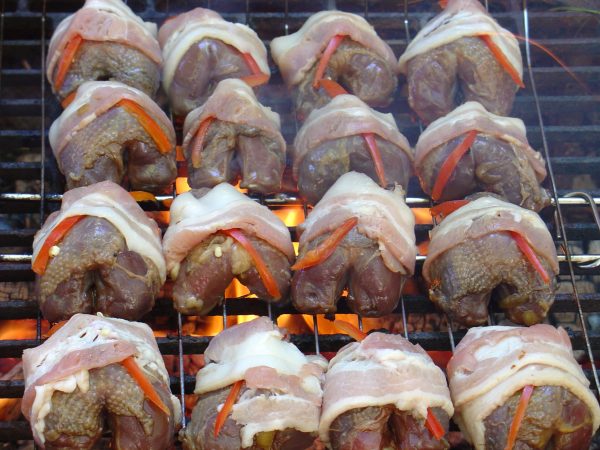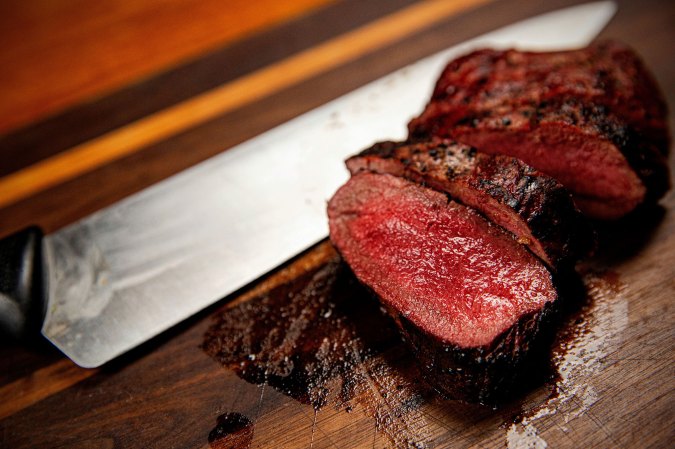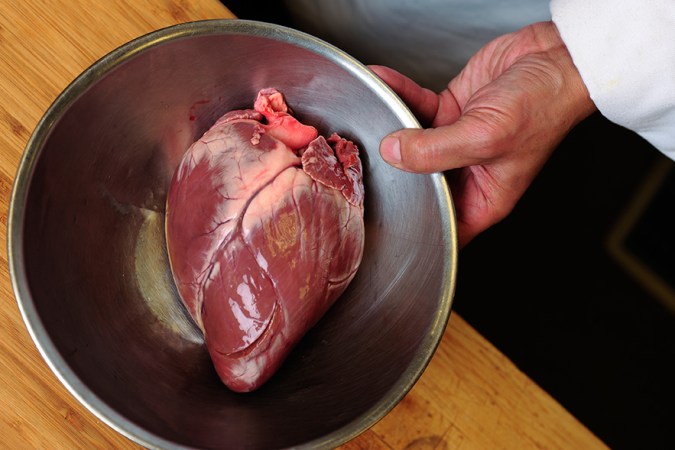Last month I wrote about how March is usually my sausage-making month. There aren’t many options for outdoor adventure then in Minnesota, so I seek my adventures in the kitchen. This is one of them. I set out to make a dry cured salami known a saucisson. Saucisson is a French term which generally just means a large sausage. The really great thing about this recipe is that it can be prepared three different ways, although I’m going to focus on the dry cured method.
I have an old cookbook called La Technique by Jacques Pepin, and that’s where I originally found this recipe. His calls for pork, but I figured another meat would work just fine. It’s a simple sausage with very few ingredients: just salt, pepper, garlic, and wine to season it. This allows the meat to really stand out and offer its real flavor. In the past I have made this with duck and venison, but I still have some of the bison my friend Ben Pena had given me.
I used four pounds of ground bison and one pound of pork fat. I ground the bison through a medium grind plate, but the fat requires dicing and that can be tricky. The fat needs to be frozen just enough so that it’s not slippery, but it still needs to be soft enough to cut into ¼ inch cubes. This takes a little patience, but it’s worth it in the end. I’ve tried grinding the fat into the meat in the past and it changes the texture of the meat and leaves a greasy mouth feel.
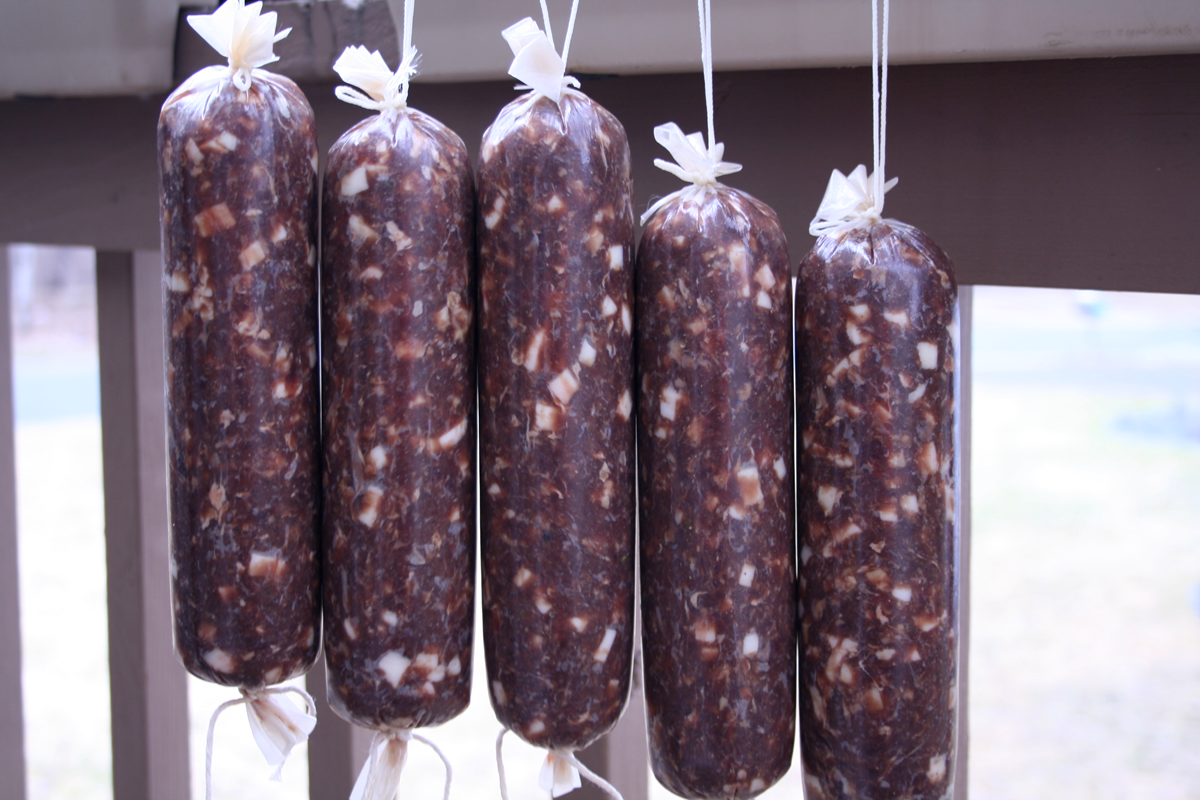
There are three different ways to prepare this sausage. You can poach it, bake it, or dry it. Depending on how you cook it, you will need to change one ingredient. This recipe calls for curing salt in addition to the kosher salt. There are two different kinds of curing salts that can be used. A lot of people are familiar with pink salt or sodium nitrite. This is what’s used for making corned venison or smoked ham, and can be used in any cooked or smoked sausages.
If you choose to cook this sausage, you should use pink salt, also known as Instacure #1 or DQ curing salt. If you choose to dry cure, use DQ cure #2, which has the nitrite in there but also has nitrate. This will help cure the meat and prevent bacteria from growing.
When drying your meat you will need a cool, dry place to hang the sausages. I use my garage and, fortunately for me, March and April in Minnesota are good months for that. It doesn’t freeze and temps in the 50’s with a little humidity allow the sausages to dry evenly. The drying time on this is about 6 weeks. A good thing to do ahead of time is weigh the sausages before you start to dry them and when the have lost about a third of their weight, you know they’re ready. You can let them dry longer and they will be okay—they just get a little harder and need to be sliced thinly to serve.
If you choose to cook the sausage they should be cooked in barely simmering water for about 35 minutes. Or you can bake them in a 350-degree oven for a similar amount of time. I have done this all three ways and hands down my favorite is to dry it. It makes a wonderful snack and will absolutely impress your friends.
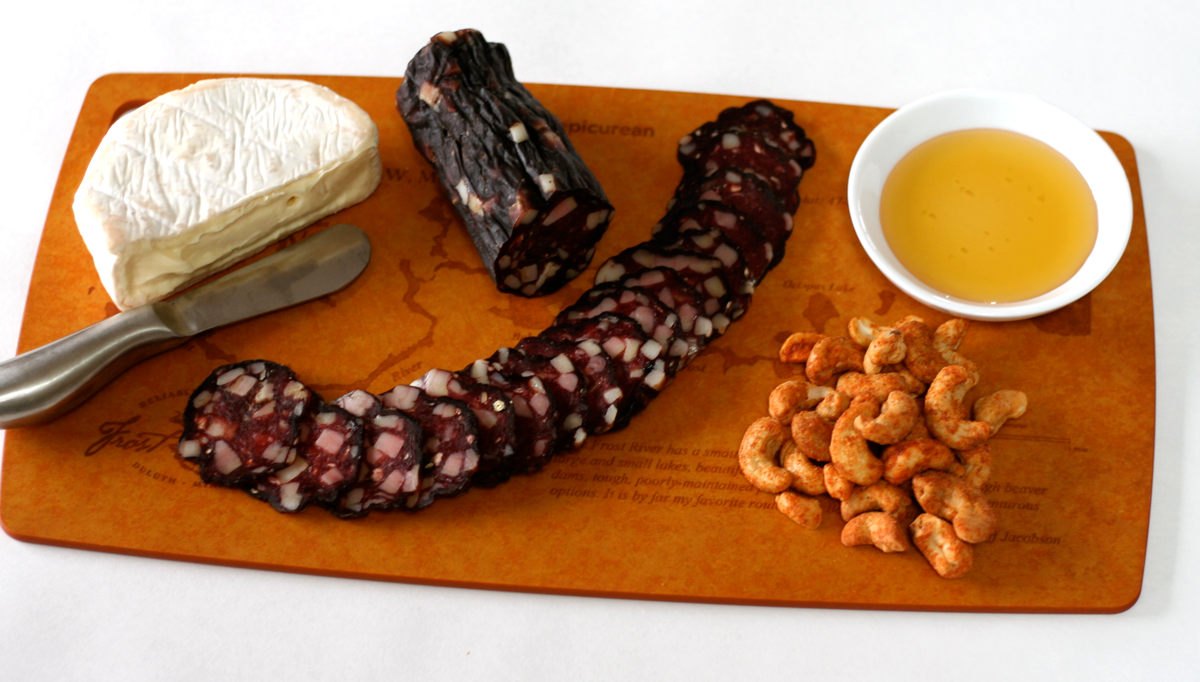
**Bison Saucisson **
4 lbs ground bison
1 lbs. pork fat cut into ¼ dice
70 grams kosher salt
3 grams DQ cure #2
6 grams finely ground white pepper
3 grams whole black pepper corns
3 cloves garlic, minced
¼ cup dry sherry.
5 1 ½ inch by 12 inch fibrous sausage casings
Combine the ingredients and stuff into casings. If you are going to cook the sausages, use DQ cure #1 and then let the sausages cure for two days in the fridge before cooking. If you are drying the sausages hang them in a dry cool space with minimal light for about 6 weeks.
